A few years ago, robotic vacuum cleaners were considered too expensive and useless appliances. Limited functionality, slow cleaning, low power - this is not all the disadvantages found in the first models. But over time, new manufacturers appeared who improved these devices and made them more affordable. Now more and more people dream of buying a little helper who is able not only to vacuum, but also to wash the floors. Today we will tell you what kind of robotic vacuum cleaners are and how not to make a mistake with the choice.
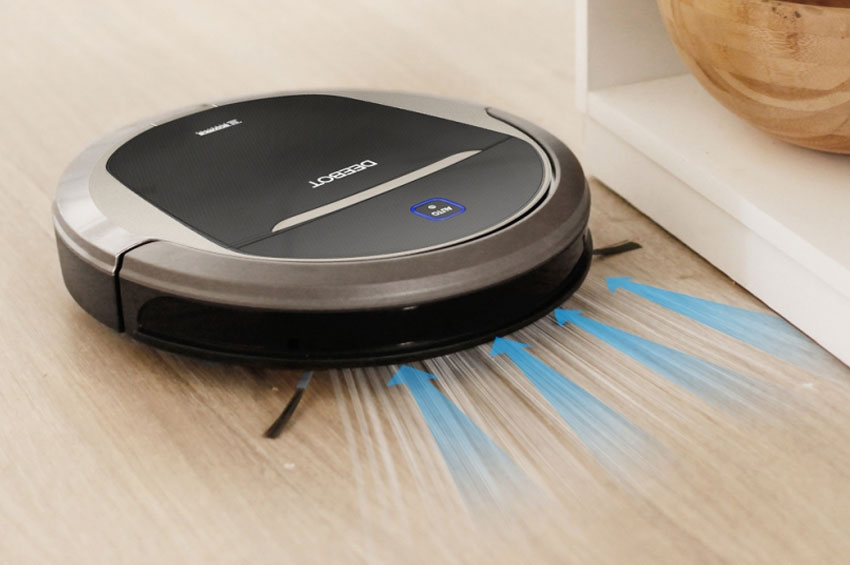
Content
What is the difference between robotic vacuum cleaners?
Unlike conventional vacuum cleaners, robotic models do not require host intervention in cleaning. They belong to the class of “smart” household appliances, which can be customized to any schedule. Even if nobody is at home, the appliance will turn on at the set time and clear all debris from the floor. Thanks to the flat body, the robot is able to move freely under a bed, sofa or other furniture. After cleaning, the owner will only have to clean the dust container from the debris and put the device on the dock for re-charging.
The first models of robotic vacuum cleaners were poorly oriented in space and often stuck near large furniture. Now, manufacturers use special algorithms to bypass items. If the appliance still gets stuck and cannot continue cleaning, it will give the owner a loud beep to help him find himself. Some modern devices are equipped with HEPA filters that trap dust at the outlet. This is much more efficient and environmentally friendly than the use of aquafilters in conventional vacuum cleaners.
Principle of operation
Modern robotic vacuum cleaners are in the form of a flat disk with a diameter of 27 to 36 centimeters. On the front of the device there is a large sensor that detects obstacles and helps to get around them. Non-removable batteries (lithium-ion, nickel-metal hydride, etc.) are used for autonomous cleaning. They need constant recharging from a special dock connected to the mains. The vast majority of devices are able to automatically find a "station" and join it. A single charge takes about 3-4 hours, depending on the type and capacity of the battery.
The device is controlled by buttons on the case, remote control, electronic display or buttons on the charging station. In addition to lengthy cleaning, you can also turn on “local”, in which the vacuum cleaner quickly removes debris on a small area of the floor, and then turns off. This is a convenient solution for the kitchen or hallway.
Despite its functionality and compactness, robotic vacuum cleaners cannot be a full replacement ordinary vacuum cleaner or a mop. They help maintain cleanliness in the home, but cannot completely get rid of dust and debris. This is due to the low power and lack of accuracy of the navigation system.
Kinds
Robotic devices have more functionality than conventional vacuum cleaners. They can be divided into 6 types: traditional, with a turbo brush, with a double turbo brush, wet polisher, dry polisher, washing robot vacuum cleaner. They differ in the way of cleaning and the availability of additional features. We discuss each view separately:
- Traditional robotic vacuum cleaners. They use only suction power in cleaning, like conventional devices.There is a small hole in the bottom of the case through which dust and small debris enter the container. Such vacuum cleaners have a budget cost, but they are not able to cope with serious pollution. Suitable for cleaning flat floors from dust particles, light debris, as well as wool. They can’t cope with the full cleaning of the apartment.
- Traditional type devices with a turbo brush. Such devices have the same characteristics as ordinary ones, but have a special brush on the bottom that constantly moves and helps to drive the dust into the container. Turbo-brush robots are versatile, suitable for almost any kind of contamination.
- Double turbo brush vacuum cleaners. Effectively clean high-pile coatings. While one brush sweeps out the trash, another brushes the pile.
- Wet polisher. Such robots have a soft cloth on the bottom, which is constantly moistened with a small container of water. Before using the device, it is necessary to carry out dry cleaning, otherwise dirty stains will remain on the floor. Most often, they are not separately working devices and simply use interchangeable nozzles.
- Dry floor polisher. It does not use suction power and simply wipes the floor with a dry cloth. It is often called a mop robot.
- The washing robot. The rarest type of robotic vacuum cleaners. It is more functional than a wet polisher, but requires special maintenance. To clean the floor using water from a separate tank.
Functionality
In addition to cleaning the floor, robotic vacuum cleaners can be equipped with other useful functions. Here are some of them:
- The function of air ionization. Helps purify air from harmful fumes and saturate it with aero ions. Assumes a built-in ultraviolet lamp. With the help of ionization, you can improve the quality of sleep, get rid of allergens, dust and gas molecules.
- Aromatization of air. There are devices that can distribute aromatic oils throughout the apartment. To do this, buy replacement cartridges.
- Filtration. Most robotic vacuum cleaners are equipped with HEPA filters, which help protect the device from dust emissions.
- Musical accompaniment. When cleaning plays unhurried music.
- Additional nozzles. Additional nozzles for collecting wool, large debris, combing the pile, etc. can be included.
Functionality is highly dependent on the cost of the robot cleaner. The higher the price tag, the more capable the device is. The good news is that most functions, like aromatizing the air, are useless. Better pay attention to device power and navigation accuracy.
Do not forget that, in addition to the device itself, the kit should also have additional devices. Here are the most necessary of them:
- Universal brush for different surfaces.
- Remote control if the device does not have a display or buttons.
- Tape and sensor to limit work space.
- A beacon that helps you find the docking station (often built into the vacuum cleaner itself).
Options may vary by model and device type. Make sure that all the necessary nozzles are included, not sold separately. Some robots require consumables (replaceable filters or cartridges). They must be inexpensive and of high quality.
Pros and cons of robotic vacuum cleaners
High-quality robotic vacuum cleaners appeared on the market relatively recently - about 10 years ago. Therefore, most people still treat them ambiguously. Let's discuss the advantages and disadvantages of these devices, in comparison with conventional vacuum cleaners:
Benefits:
- The robot vacuum cleaner carries out cleaning automatically, without the need for constant adjustment and manual movement. The only thing you need to do yourself is to clean the dust bag from the collected garbage or change the water.
- Cleaning at any time of the day. The vacuum cleaner can be adjusted so that it is cleaned at a specified time. It will maintain cleanliness while you are at work, on a walk, on vacation, etc.
- Some models can not only vacuum, but also wash floors.This significantly saves time.
- Robotic devices are so compact that they easily pass under sofas and armchairs. You no longer have to push back heavy furniture to remove accumulated dust.
- Most instruments are protected against dust emissions using HEPA filters. It's great allergy solution and small children.
- Some robotic vacuum cleaners are capable of aromatizing and ionizing air. This is an additional prevention of viral diseases.
Disadvantages:
- Regardless of functionality, a quality robot vacuum cleaner will cost you more than a regular one. This is due to the use of many different sensors and an intelligent movement system.
- Due to the rounded body, such devices are not able to remove debris from corners without a special nozzle.
- For efficient operation of the vacuum cleaner on the floor should not be small objects, extension cords or wires.
- Compared to conventional devices, robotic devices have a small dust collector that needs to be cleaned after each cleaning.
- The battery life often does not exceed two hours, so the robot vacuum cleaner is not suitable for a house with a large area.
- Despite the functionality, such devices still can not get rid of all the pollution. Therefore, once every 2 weeks it is necessary to carry out cleaning with an ordinary vacuum cleaner or a mop.
- Vacuum brushes must be constantly cleaned of wool and adhering debris.
How to choose a device
When choosing a robot vacuum cleaner, you should focus not only on cost and functionality, but also on technical characteristics, such as power, noise level, dust collector volume, type of battery, dimensions, cleaned area and type of flooring. And now in more detail:
- Suction power. This parameter determines how efficiently it will work. The higher the power, the faster and more debris the vacuum cleaner can collect. The most ordinary models are suitable for dust and wool, but for large garbage it is better to buy more powerful models. This parameter also affects the amount of energy consumed and battery life.
- Noise level. The lower this indicator, the more comfortable the cleaning will be for you. The test showed that the optimal noise level is up to 60 dB.
- The volume of the dust bag. For small apartments and houses (up to 60 square meters) it is better to choose vacuum cleaners with containers up to 0.4 liters. For medium rooms (up to 80 square meters), devices with a capacity of 0.5 liters are suitable. And for large apartments it is more convenient to use appliances with dust collectors up to 1 liter.
- Battery type and capacity. In most budget models Nickel-metal hydride batteries installed. They wear out quickly and poorly hold a charge. It is preferable to choose devices with lithium-ion or lithium-polymer batteries. They are more expensive, but are safer, more environmentally friendly and more durable. The optimum battery capacity is from 2500 mAh.
- Dimensions Make sure that the selected vacuum cleaner moves smoothly around the room. It should pass under sofas and countertops and not get stuck.
- The area of the room. Most often, this parameter is indicated in the technical specifications of the device. The vacuum cleaner must clean the entire apartment before the battery runs out. Some people think that to calculate the harvesting area, you need to take the time and take ten. But this is rather a mistake, because devices have different algorithms.
- Type of flooring. Linoleum and tile are universal coatings that are not afraid of moisture. But the cleaning of the laminate should be treated with extreme caution. For him do not fit washing robotsas such devices can easily spoil the coating. It is better to choose robots with a turbo brush. They will easily clean out the trash from all cracks and will not damage the tree. The wet polisher will do fine with wet cleaning, it is great for laminate flooring.
Rating of the best robotic vacuum cleaners
It is difficult to choose a good robot vacuum cleaner without the help of a specialist. The prices of some popular models are very high and do not match the quality. We've put together the top 10 best 2019 automatic vacuum cleaners based on user reviews and reviews.
PANDA X500 Pet Series
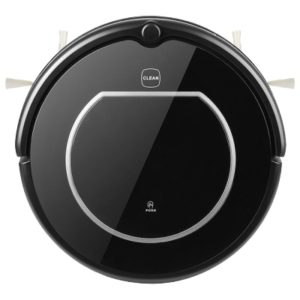
- Type of cleaning: dry
- Ultimate Suction Power: 50 W
- Dust collector: cyclone
- Dust box volume: 0.3 liters
- Fine filter: yes
- Maximum noise level: 50 dB
- Device weight: 3.5 kg
- Type of control: touch
- Purpose: for an apartment with animals, especially strong pollution and large garbage
- Optional: speech functions
- Easy to get out of the wires
- Low noise
- Perfectly removes wool
- There is a virtual wall function
- Low cost service
- English voice prompts
- Marky glossy case
- Brushes are quickly erased
iBoto Aqua X310
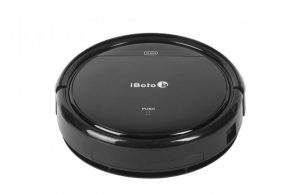
- Type of cleaning: dry and wet
- Ultimate Suction Power: 60 W
- Dust collector: cyclone filter
- Dust box capacity: 0.3 liters
- Battery Type: Li-ion
- Capacity: 2600 mAh
- Fine filter: yes
- Maximum noise level: 54 dB
- Device weight: 1.9 kg
- Purpose: for dry and wet cleaning of floor coverings, for cleaning wool and dust
- Silent operation of motors
- Convenient management
- Easily cope even with dried spots.
- It takes longer to charge.
- Poorly looking for a charging station
Clever & Clean AQUA Series-01

- Type of cleaning: dry and wet
- Ultimate Suction Power: 24 W
- Dust collector: cyclone
- Dust box volume: 0.5 liter
- Battery: Nickel Metal Hydride
- Fine filter: yes
- Maximum noise level: 54 dB
- Device weight: 3.5 kg
- Type of control: electronic display and remote control
- Purpose: for cleaning pet hair, especially strong pollution and large garbage
- Optional: UV Disinfecting Lamp
- Quickly cleans the entire apartment
- High-quality wet cleaning without streaks
- The compact body runs under any sofa
- Water spills when wiped
- Inconvenient voice control
PANDA X900 Wet Clean

- Type of cleaning: dry and wet
- Ultimate Suction Power: 65 W
- Dust collector: cyclone filter
- Dust box capacity: 0.4 liters
- Battery Type: Nickel Metal Hydride
- Fine filter: yes
- Maximum noise level: 50 dB
- Device weight: 3 kg
- Purpose: for dry and wet cleaning of floor coverings, for cleaning wool and dust
- Additionally: there is a disinfecting UV lamp
- Convenient dust collector
- There are several cleaning modes
- Good compressor
- Poorly oriented in space and often gets stuck
POLARIS PVCR 0926W EVO
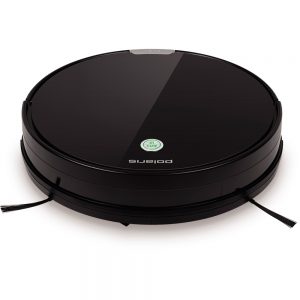
- Type of cleaning: dry and wet
- Ultimate Suction Power: 22 W
- Dust collector: cyclone filter
- Dust box capacity: 0.5 liter
- Battery Type: 2600 mAh Li-ion
- Fine filter: yes
- Maximum noise level: 60 dB
- Purpose: for dry and wet cleaning of floor coverings, for cleaning wool and dust
- Extras: there is a cleaning timer
- Easy to Overcome
- Soft bumper
- Cleans well along walls
- Always finds a charging station
- Inconvenient waste container
- Not suitable for black floor
Xiaomi Mi Robot Vacuum Cleaner
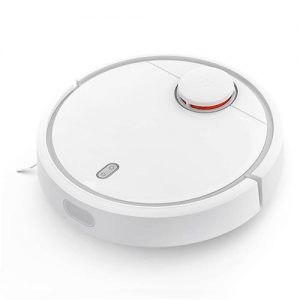
- Type of cleaning: dry
- Ultimate Suction Power: 55 W
- Dust collector: cyclone filter
- Dust box capacity: 0.4 liters
- Battery Type: Li-ion
- Battery capacity: 5200 mAh
- Fine filter: yes
- Maximum noise level: 50 dB
- Device weight: 3.8 kg
- Purpose: for dry cleaning of floor coverings, for cleaning wool and dust
- Optional: synchronization with a smartphone (Mi Home smart home system), distance sensor
- Robust assembly
- Intelligent charging system
- Convenient control via smartphone
- Automatically plans a route
- Does not find a charging station if it is in another room
- Chinese application
iRobot Roomba 616

- Type of cleaning: dry
- Dust collector: cyclone filter
- Battery Type: Nickel Metal Hydride
- Battery capacity: 2200 mAh
- Fine filter: yes
- Maximum noise level: 60 dB
- Device weight: 3.6 kg
- Purpose: for dry cleaning of floor coverings, for cleaning wool and dust
- Optional: upgraded battery
- Cleans quickly and efficiently
- Easy to clean
- Easily finds a base for charging
- Dust clogs the mechanism
- Noisy work
iRobot Roomba 980
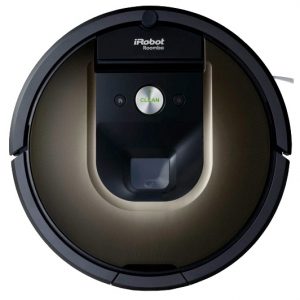
- Type of cleaning: dry
- Dust collector: cyclone filter
- Battery Type: Li-ion
- Fine filter: yes
- Maximum noise level: 50 dB
- Device weight: 4 kg
- Purpose: for dry cleaning of floor coverings, for cleaning wool and dust
- Additionally: spring-loaded and rubberized wheels, adaptation to any floor coverings, special carpet cleaning system with different pile
- Quickly copes with cleaning a large house
- No hair wound on brushes
- Can be run remotely
- Does not leave uncleaned areas
- It is inconvenient to clean the container from dust
- Easy to scratch
Philips FC8794 SmartPro Easy
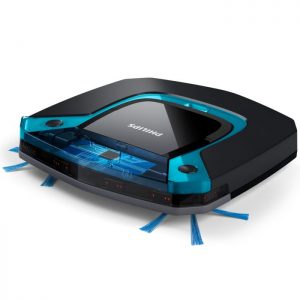
- Type of cleaning: dry and wet
- Dust collector: cyclone filter
- Dust box capacity: 0.4 liters
- Battery Type: Li-ion
- Fine filter: yes
- Maximum noise level: 45 dB
- Device weight: 2 kg
- Purpose: for dry and wet cleaning of floor coverings, for cleaning wool and dust
- Additionally: there is a HEPA12 filter
- Get rid of bad odors
- Fast charging
- Works for at least an hour
- Cheap option
- Confused in wires
- Skips corners
iClebo Arte
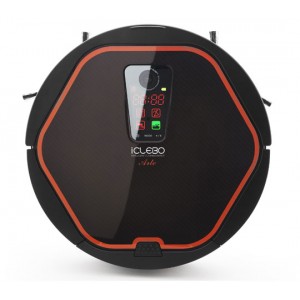
- Type of cleaning: dry and wet
- Dust collector: cyclone filter
- Dust box capacity: 0.6 liter
- Battery Type: Li-ion
- Battery capacity: 2200 mAh
- Fine filter: yes
- Maximum noise level: 55 dB
- Device weight: 2.8 kg
- Purpose: for dry and wet cleaning of floor coverings, for cleaning wool and dust
- Optional: rag with microfiber, turbo brush, 2 side brushes
- Large brushes pick up all the trash
- Easy to clean
- Works almost silently
- Better than popular novelties
- Brushes sometimes get stuck in crevices
- Does not accept magnetic tape
To summarize
Some models of robotic vacuum cleaners can also be included in the 2019 ranking. They are reliable, durable and help save time when cleaning. When choosing, it is better to focus on technical specifications and real customer reviews. Devices from trusted brands Provided with good service and a long warranty. If you want to save money, you can purchase a Chinese-made device. Do not overpay for unnecessary functionality, such as aromatization or ionization.
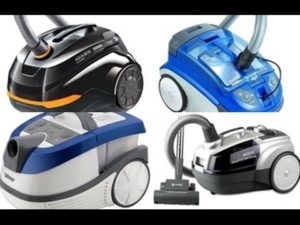
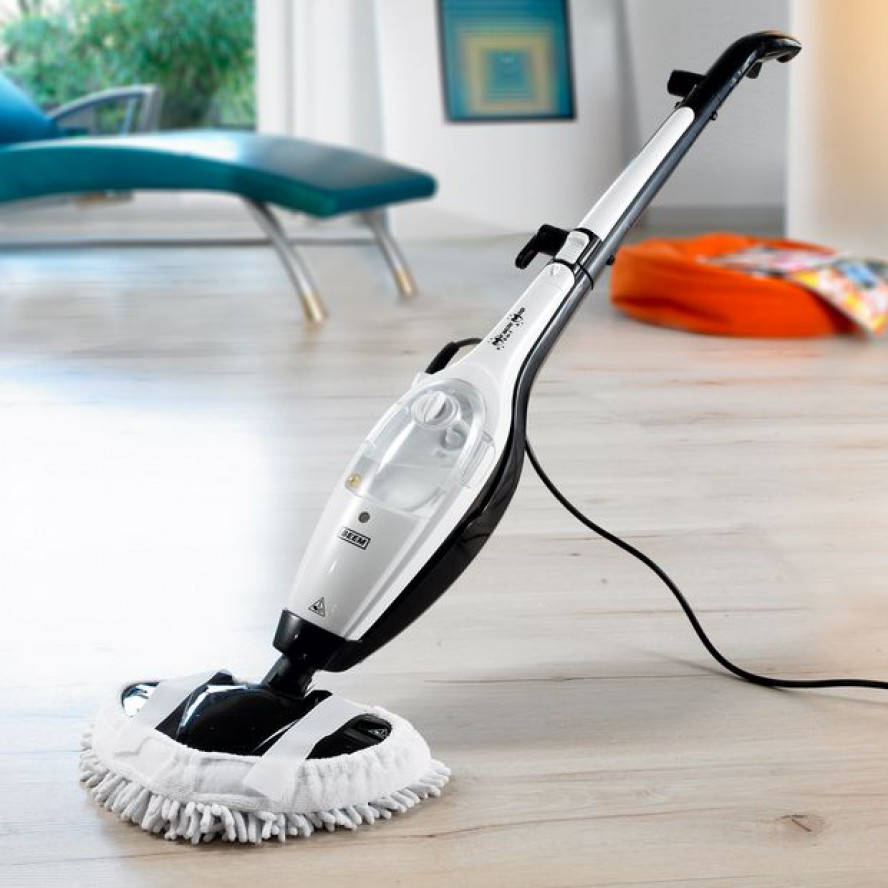
I agree that iClebo Arte is the best option for those who need a relatively inexpensive and high-quality robot vacuum cleaner. We have been with him for about a year now, I am very pleased with him. It is cleaned cleanly and does not leave debris or dust after itself. Itself starts work on a timer, moves around the apartment on its own, is not lost. Often I use it as a polisher, even if it does not wipe stains in this mode, but the floor immediately shows that it is clean. Although more expensive robots have different gadgets like remote control, we can do without this function as well, I don’t see any sense in overpaying for it.
I have a Panda robot vacuum cleaner. Took from the calculation that the apartment is small, cheaper. Removes up to 40 squares, this is enough for me. This is their cheapest model, but I am quite pleased with his work.
We have a Samsung and I really like it, that everything is simple in it and there are no troubles. It works fine and cleans cleanly. We use this model for now
They bought such a drone at one time, having seen enough of Breaking Bad. We had a model iRobot Roomba, a little older than what is described in the article.He regularly cleaned the carpet, but sometimes he sucked in small objects from the floor (earrings, toys). He worked almost silently, did not interfere with sleep. If I buy a new robot, then the exact same or technically improved model, but of the same series. Their equipment is solid and intuitively easy to use.
But I think that there is no point in overpaying for expensive Japanese and German models. I have a Chinese-made Gutren robot vacuum cleaner. Reviews on the Internet about this brand are very positive. Yes, now I myself understand that Gutren produces reliable equipment.
My robot has been serving me for a year now. In addition to dry cleaning, he also performs wet cleaning (with the help of an attached cloth to the lower platform). The robot is quite powerful, diligent, garbage picks up scrupulously.
I am very pleased with my Chinese assistant. And I sincerely do not understand people who are still vacuuming manually.
At one time I really wanted to buy a vacuum cleaner like Jesse Pinkman from Breaking Bad, they are "Breaking Bad." He had, irobot roomba 770. I shoveled heaps of sites and plunged quite tightly into the world of vacuum cleaners of this brand =) But I did not buy it unfortunately. Now, in my purely biased view, the 616 model will be more suitable for my not very large meter housing
We have a pelesos robot from Philips. I will say one thing, for me the most convenient model. I use it for the fifth year, it works like a new one. In addition, it takes half the cleaning time with him
And we also have a new purchase. Most recently, we bought a Panda vacuum cleaner for an autonomous apartment cleaning. But he doesn’t ride with us on carpets and rugs. Now we have plans to cover the floor with exactly lenolium and make as few obstacles for the robot as possible. And so, if you look from the point of view of practicality, then the good thing. Another half an hour of time saved during cleaning can be spent with the family))
Relatives purchased a Philips robot vacuum cleaner. It is very interesting to watch his work. He collects dust, and pretty good. But it is more suitable for smooth surfaces. She doesn’t want to ride on carpets. Sometimes it stomps in one place for a long time. I do not have a robot vacuum cleaner. If you buy, you will have to abandon carpets and paths. Prices for robotic vacuum cleaners are still high. In a small apartment, you can do without a robot. And for large and spacious rooms, of course, not bad to purchase.
A robot vacuum cleaner is an indispensable gift in the house, especially when you have a small child and a cat. We bought our own a few months ago. We chose Samsung, we have almost all the appliances in the house of this brand, so we didn’t think much. For a small apartment, the ideal advantage of the robot is the vacuum cleaner can be changed from the first day, it saves your time. The only thing I don’t know is when we crash into what is standing still, we have to move it ourselves. Well and of course, if you have carpets, the robot vacuum cleaner will not suit you.
Vacuum cleaner robot insanely convenient thing. You launch it and it “crawls” throughout the apartment and cleans the floor. Its functions depend on the price. It cleans wooden floors well, without carpets. I did not try to clean the carpets, but I would have to try it too. I bought on aliexpress, at a discount, for 7-8 thousand rubles. For a large apartment, super.
Our Ayklebo Omega on a single charge removes the standard three rubles. then he goes to the base to rest. In general, it is convenient that he can clean in my absence. Neither noise bothers me, nor does it get confused underfoot, nor do I bother him from doing my thing. But I look after Arte’s parents
Recently bought a robot polisher Everybot RS700, which makes wet cleaning. I start it after the robot vacuum cleaner. He washes the floors well, and you can’t tell whether the floor polish was washed or I myself.Our cleaning is now fully automated, I am very pleased with this.